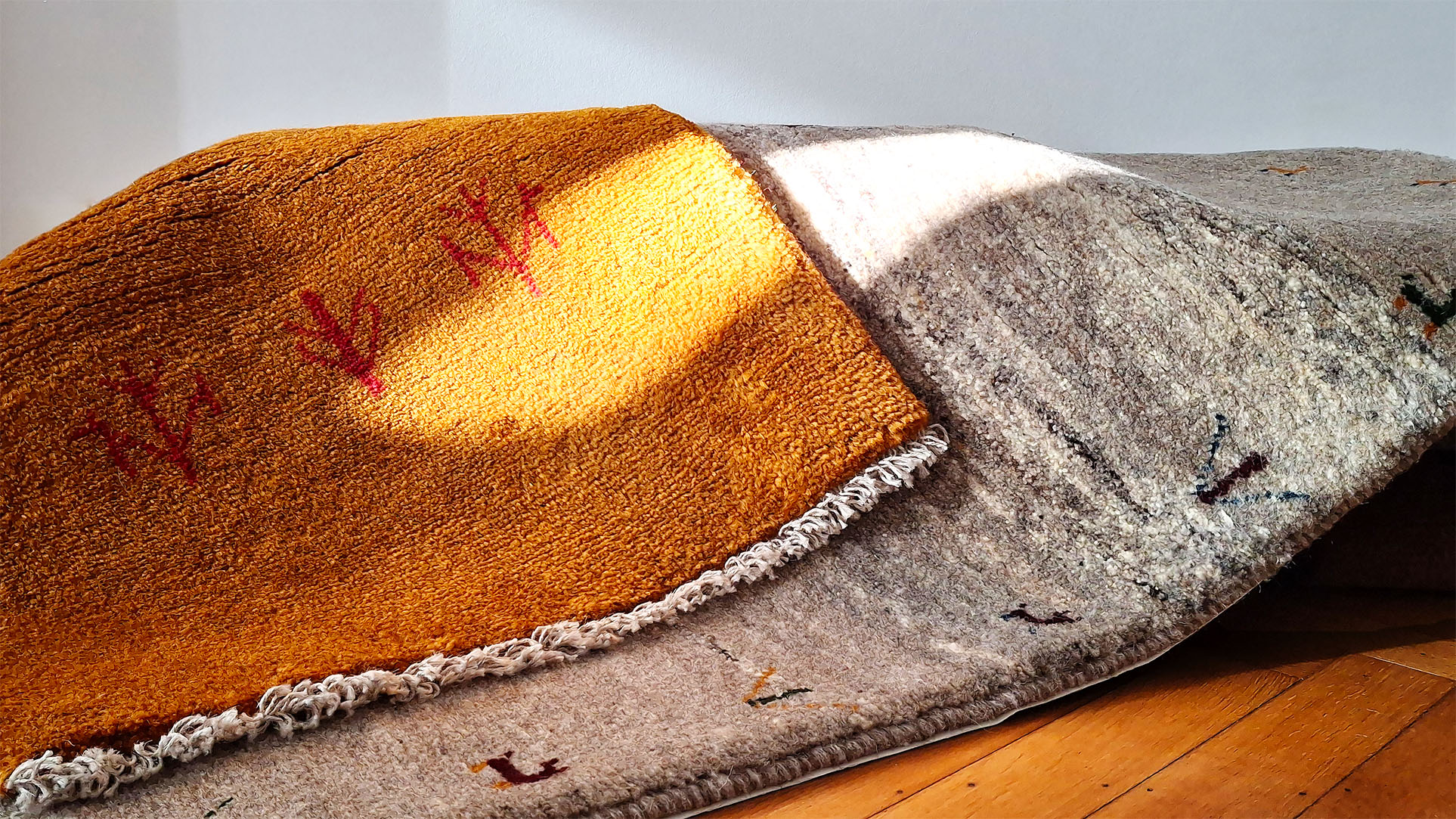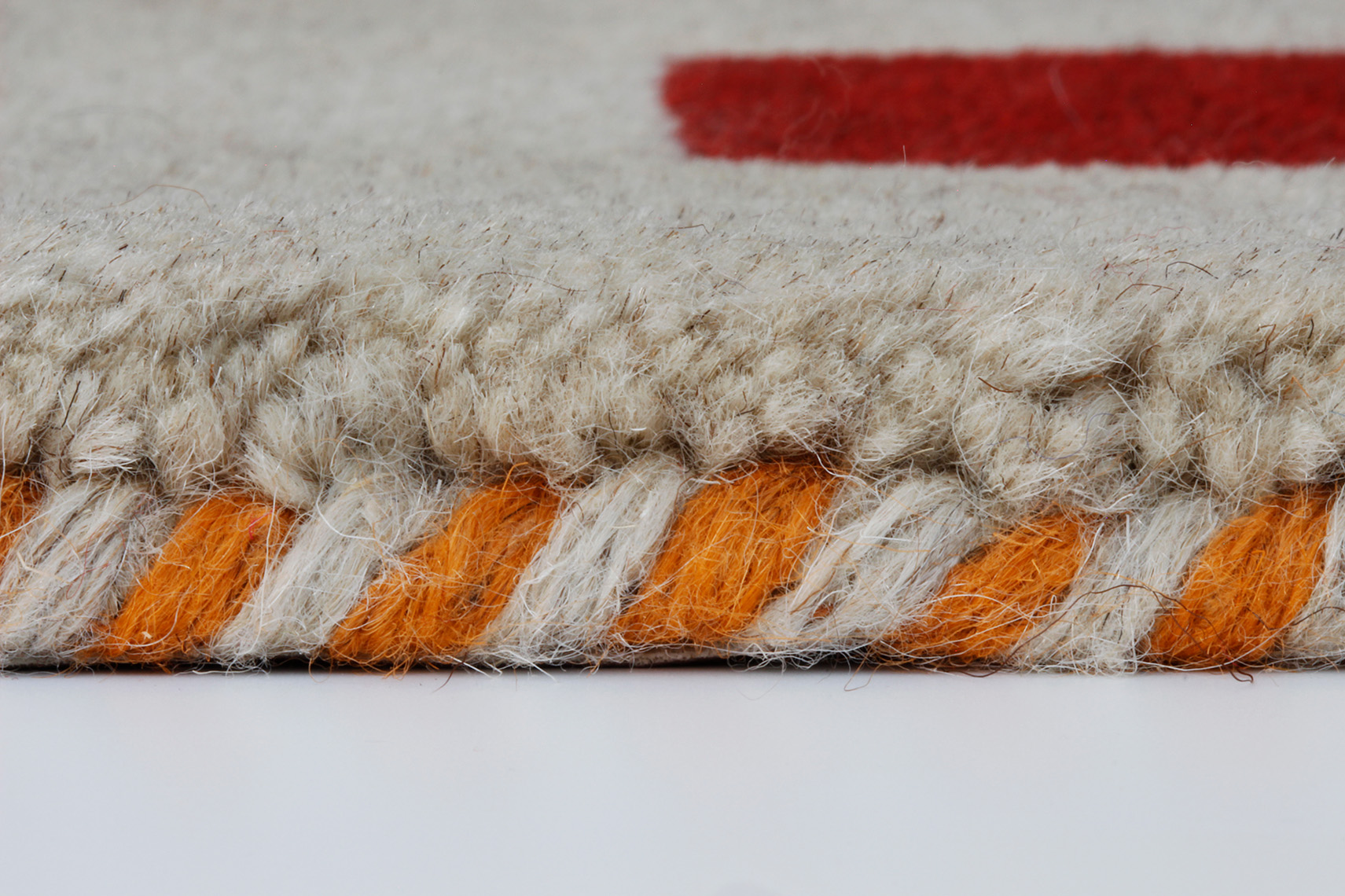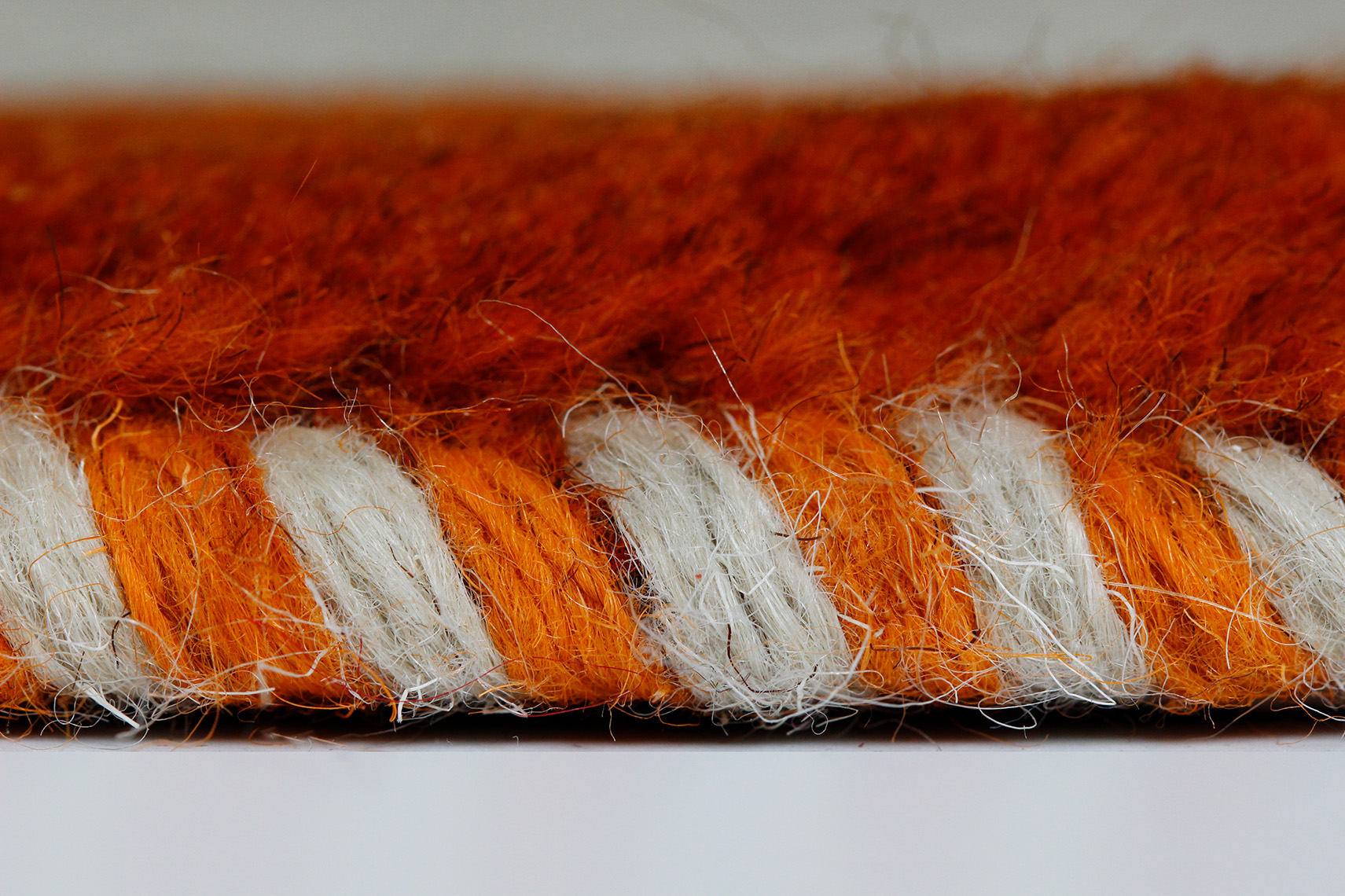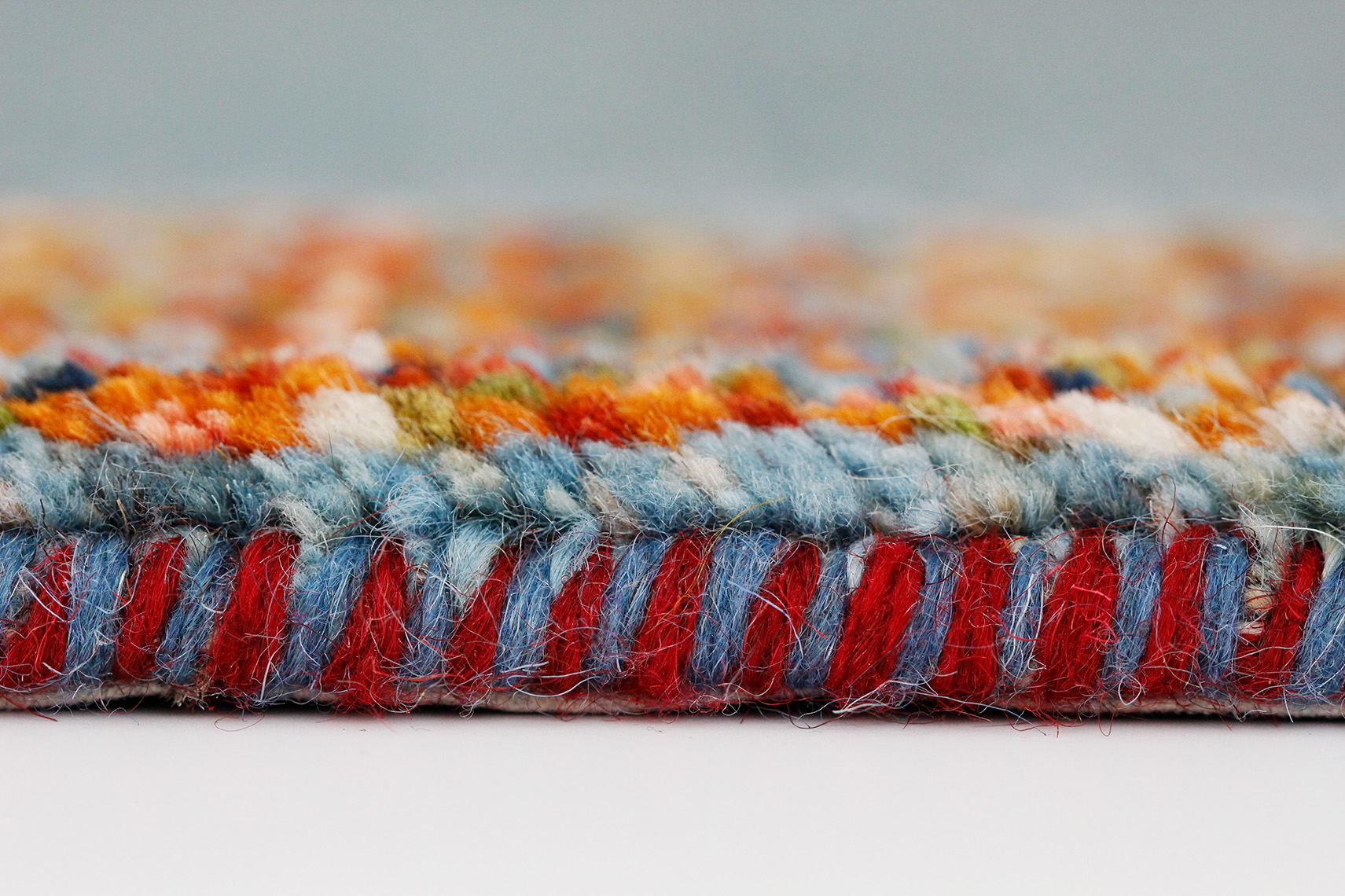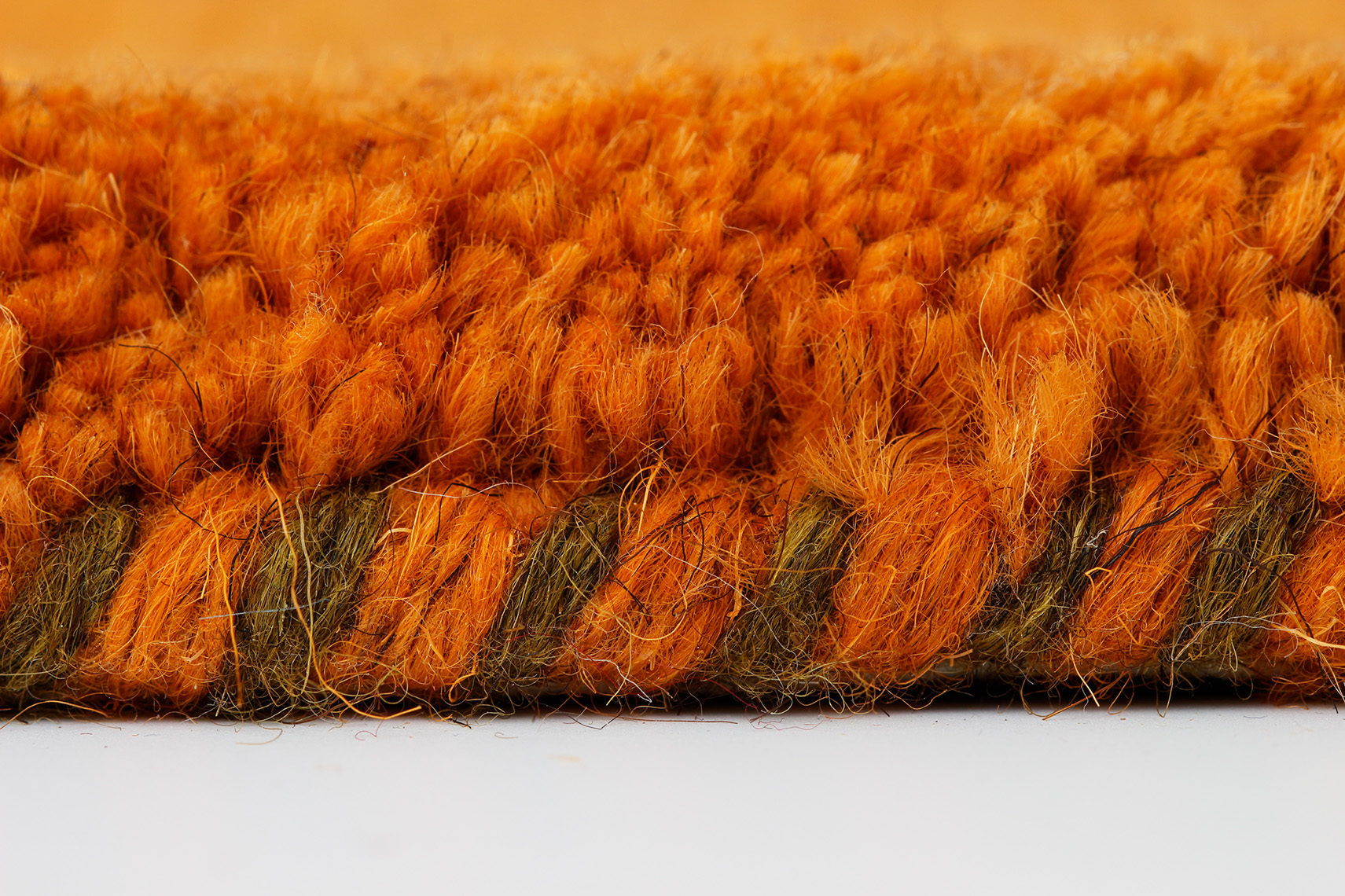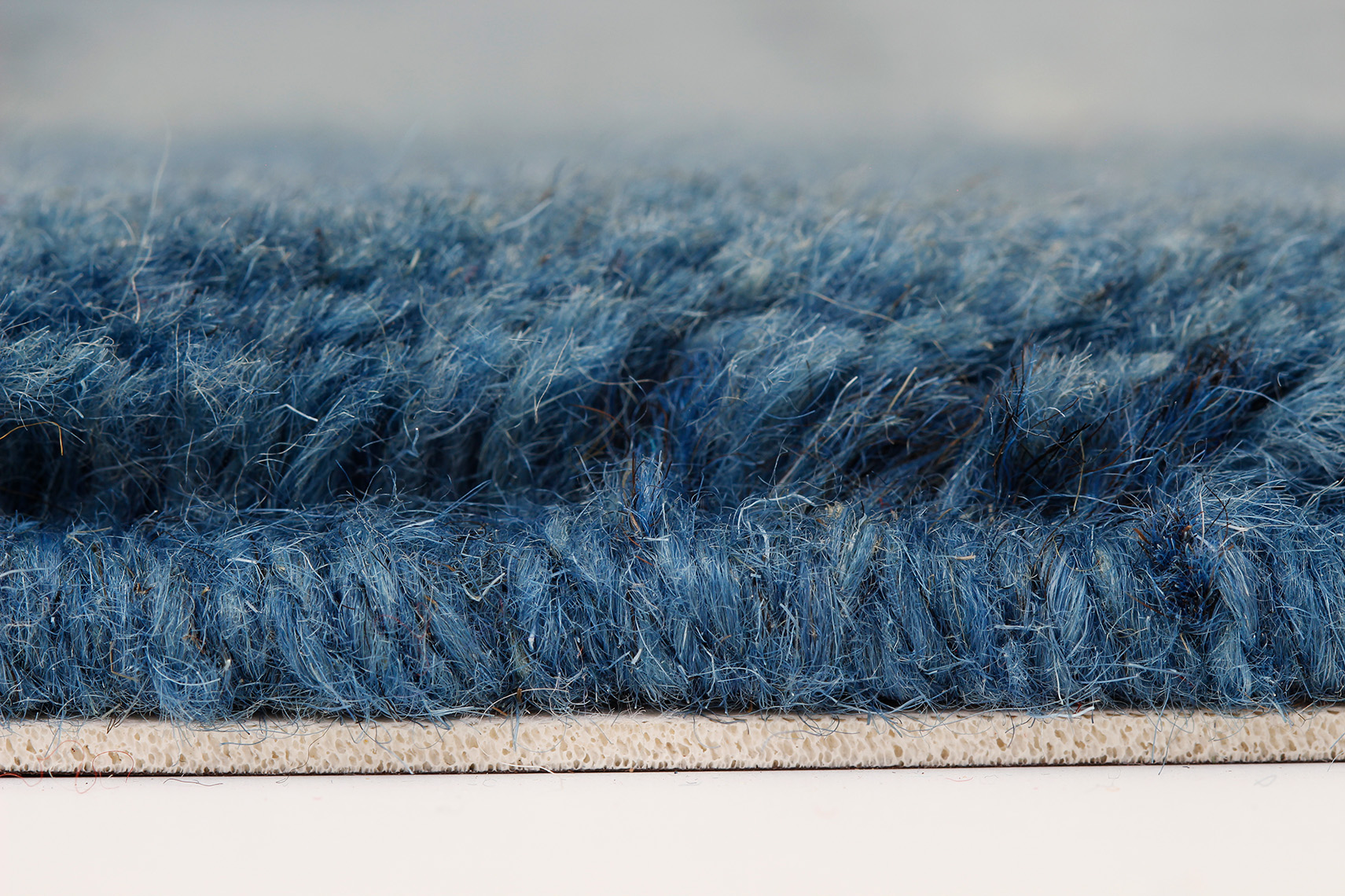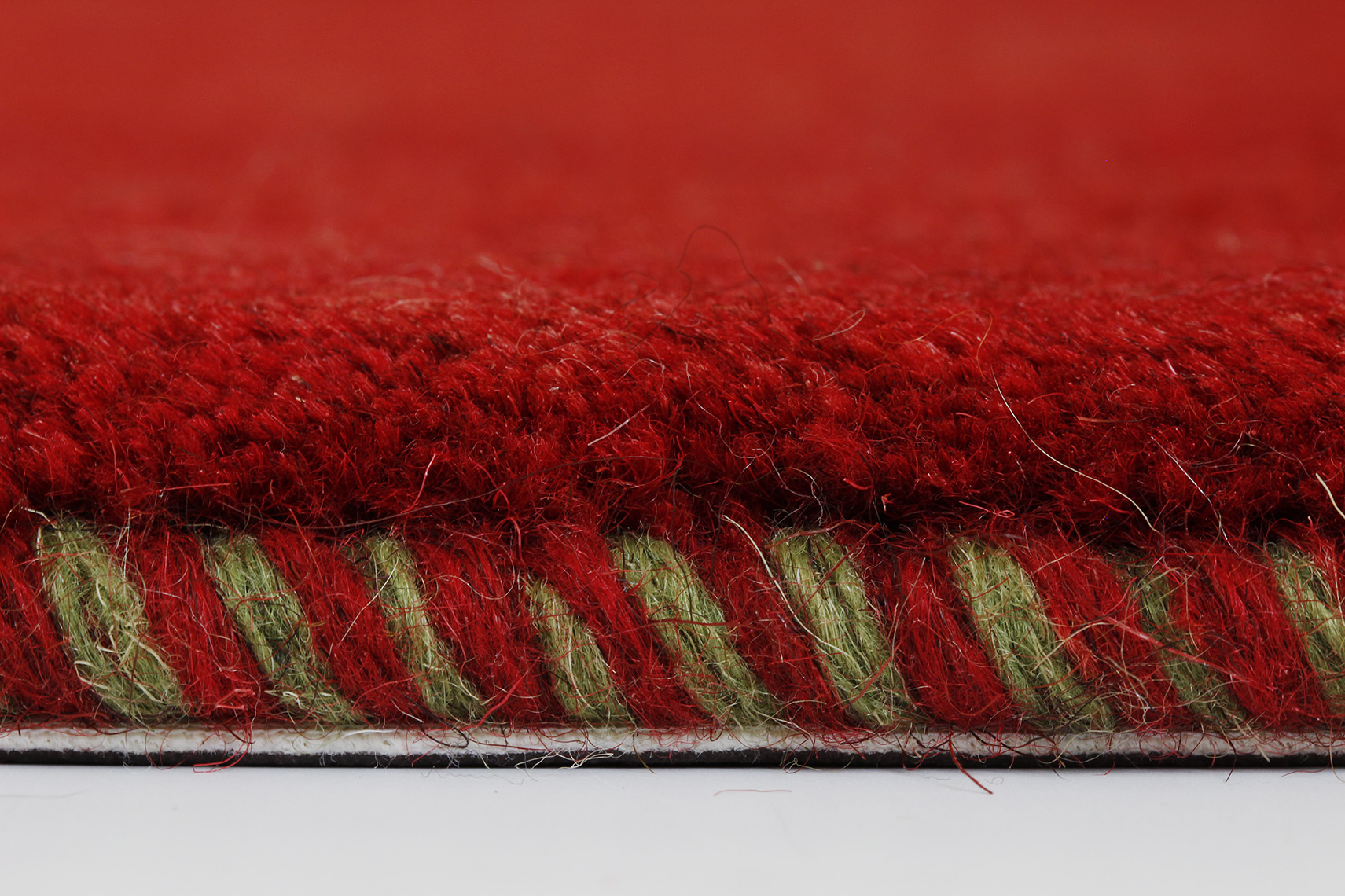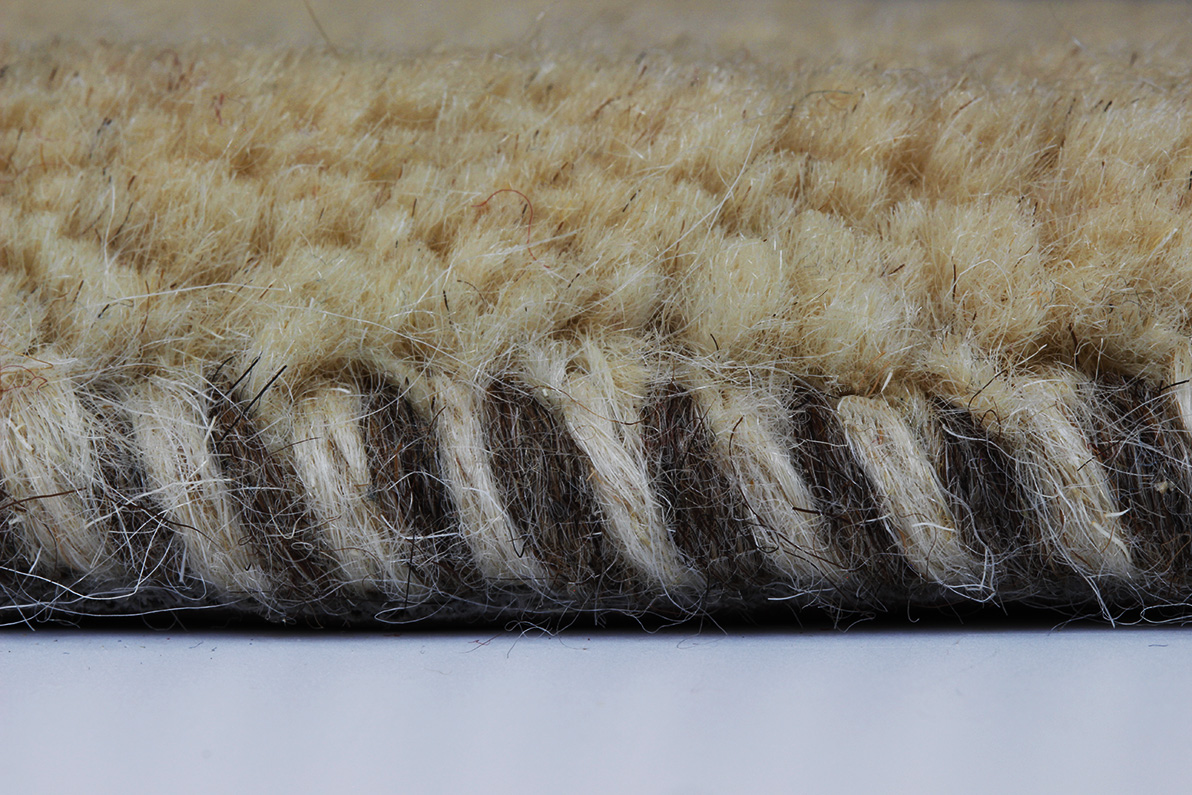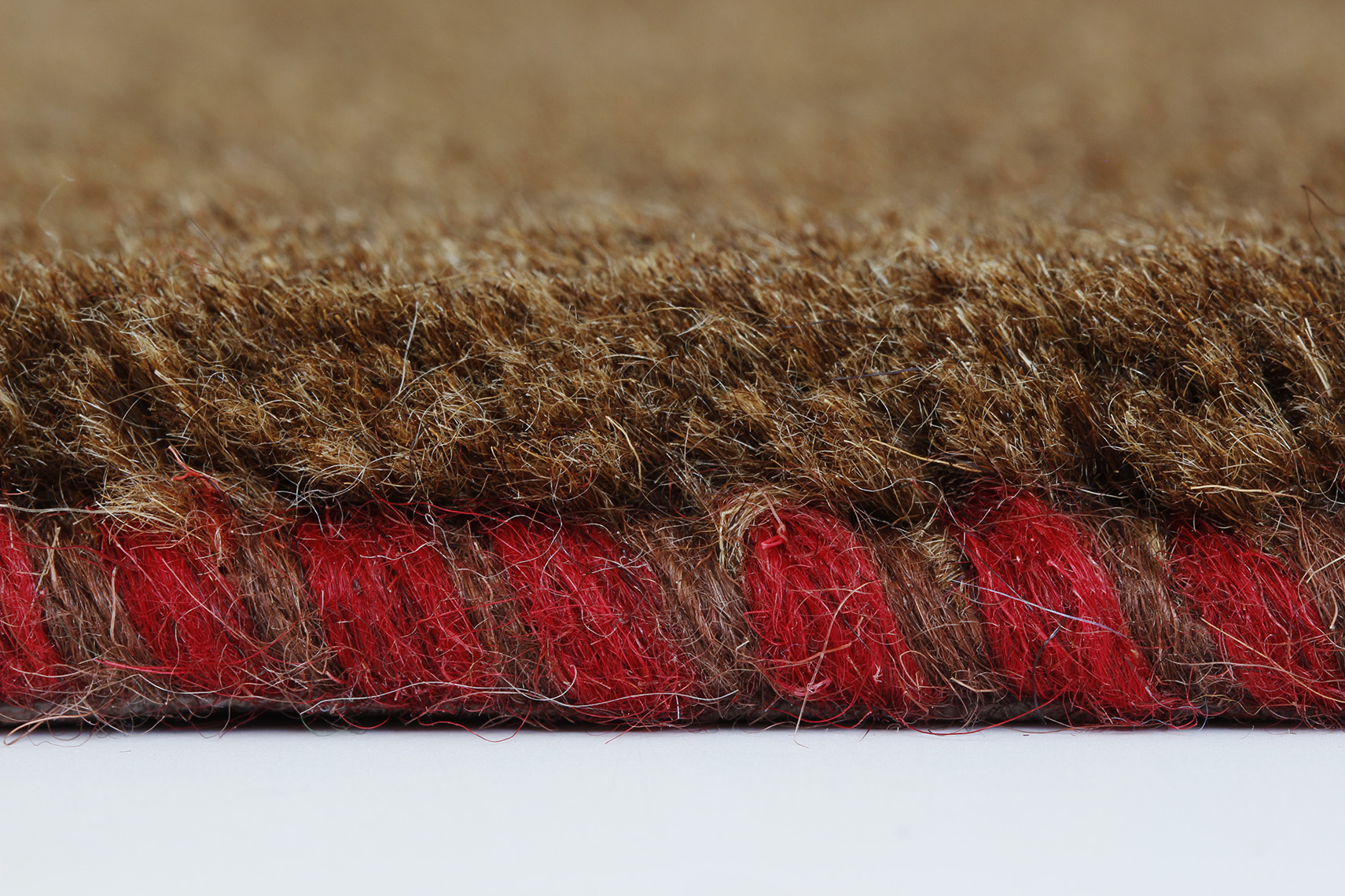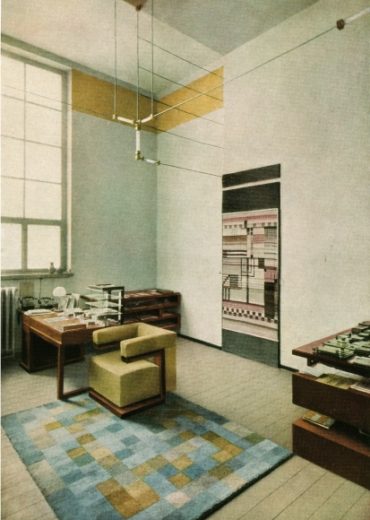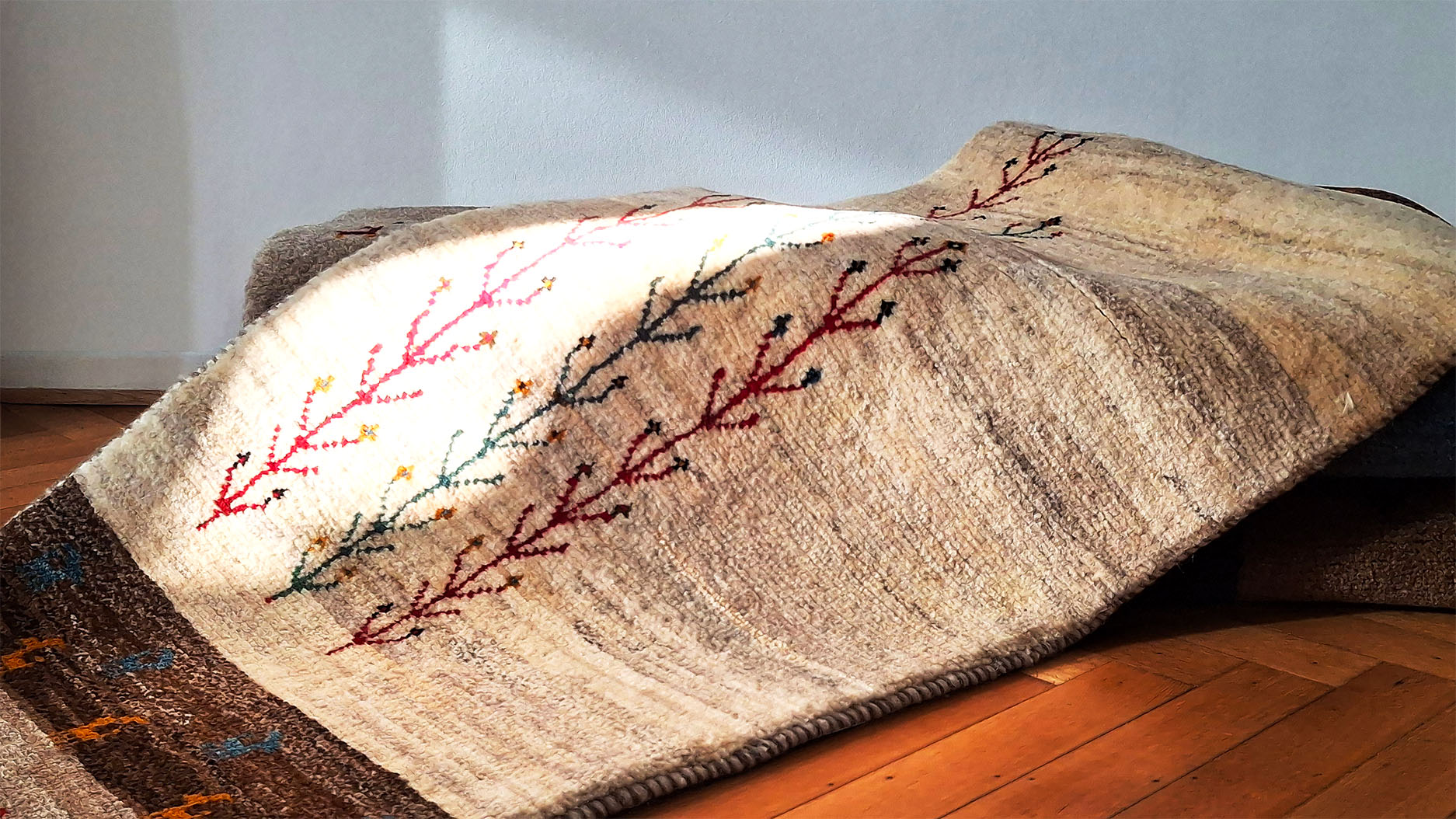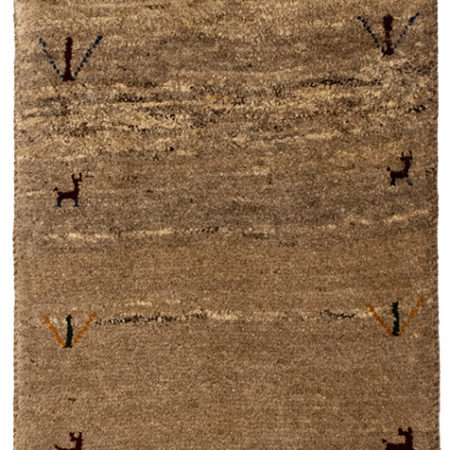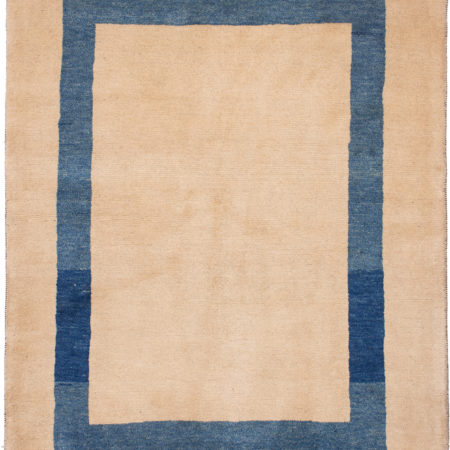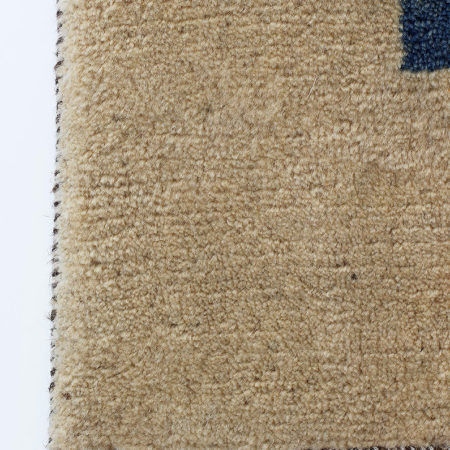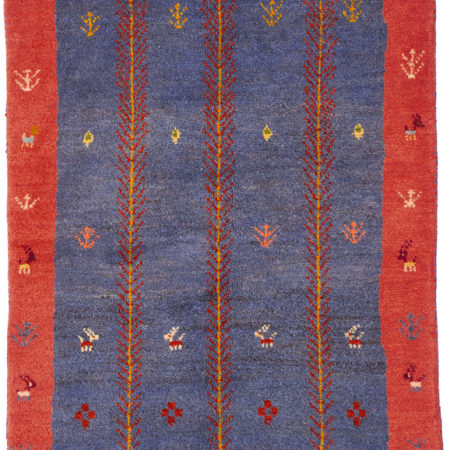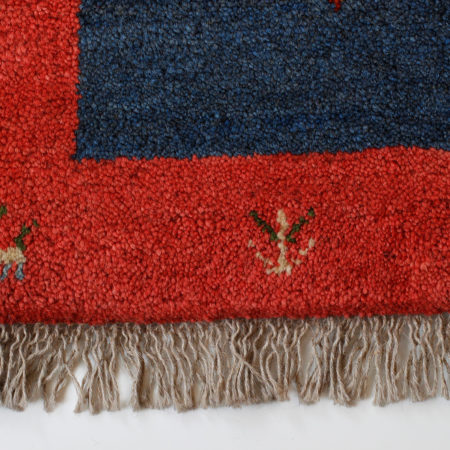In the world of interior design, few elements carry the weight of history while simultaneously feeling utterly contemporary like a handmade Gabbeh rug. These remarkable textiles, with their bold colours and minimalist designs, have transcended their humble origins to become coveted pieces in homes across the globe. But what exactly are Gabbeh rugs, and why have they captivated the hearts of designers and homeowners alike? In this article, inspired by Parviz Tanavoli’s book “Gabbeh: Art Underfoot” (2004), we’ll explore the fascinating journey of these unique carpets.

Gabbeh: Art Underfoot (2004). Image courtesy of Parviz Tanavoli.
Gabbeh: Art Underfoot (2004)
This groundbreaking work represents the first comprehensive study dedicated solely to Gabbeh rugs, elevating these often-overlooked textiles to their rightful place in the canon of textile arts. Through meticulous research and stunning photography, Tanavoli traces the evolution of Gabbeh from practical nomadic floor coverings to internationally recognised art forms.
The Emergence of an Underground Icon
Ancient Origins Of Gabbeh
Gabbeh as an Artistic Expression of Nomadic Weavers
Gabbeh rugs are defined by their thick pile that gives them a unique soft texture.
Click on any rug to explore its details.
The Art Beneath Our Feet
Bauhaus and Gabbeh: Converging Aesthetics
In a fascinating parallel explored in “Gabbeh: Art Underfoot,” Tanavoli reveals how the Bauhaus movement of the early 20th century independently arrived at design principles remarkably similar to those found in traditional Gabbeh rugs. The Bauhaus school, founded in 1919 Germany under Walter Gropius, sought to bridge the artificial divide between art and industry—a division that historically hadn’t existed. Bauhaus designers like Gertrud Arnt created rugs with geometric compositions and bold color blocks strikingly similar to Gabbeh designs, despite having no knowledge of these Iranian tribal textiles. Tanavoli points to a specific “kheshti” (tile) composition rug designed for Gropius’s office that bears uncanny resemblance to traditional Gabbeh patterns. What cultural forces led these vastly different traditions to converge on identical design languages? And why were the resulting works judged so differently by the art world? We will explore these questions in another article (coming soon).
Traditional Craft and Environmental Responsibility
- Wool sourcing from the weavers’ own sheep, often using undyed natural colours (grey, white, black, and brown)
- Natural dyeing processes using plant materials native to the regions
- Hand-spinning techniques requiring no electricity
- Longevity of the final product, with many antique Gabbeh rugs still in use after decades
These practices stand in contrast to modern carpet production, which often involves chemical dyes, synthetic materials, and energy-intensive manufacturing. The nomadic origins of Gabbeh also meant that materials had to be sourced locally and sustainably—a practice that continues in many traditional weaving communities today.
Living With Gabbeh in Contemporary Homes
Finding Your Gabbeh
About Parviz Tanavoli
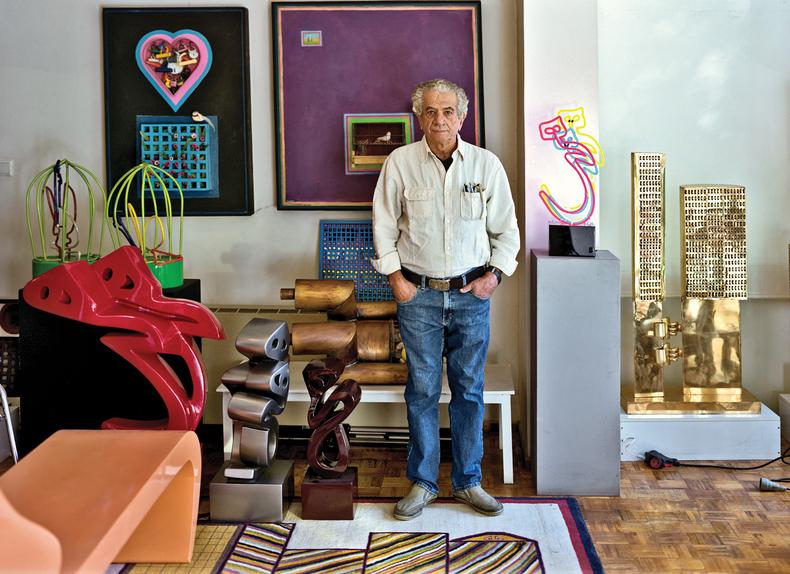
Parviz Tanavoli in his studio. Image courtesy of Parviz Tanavoli.
